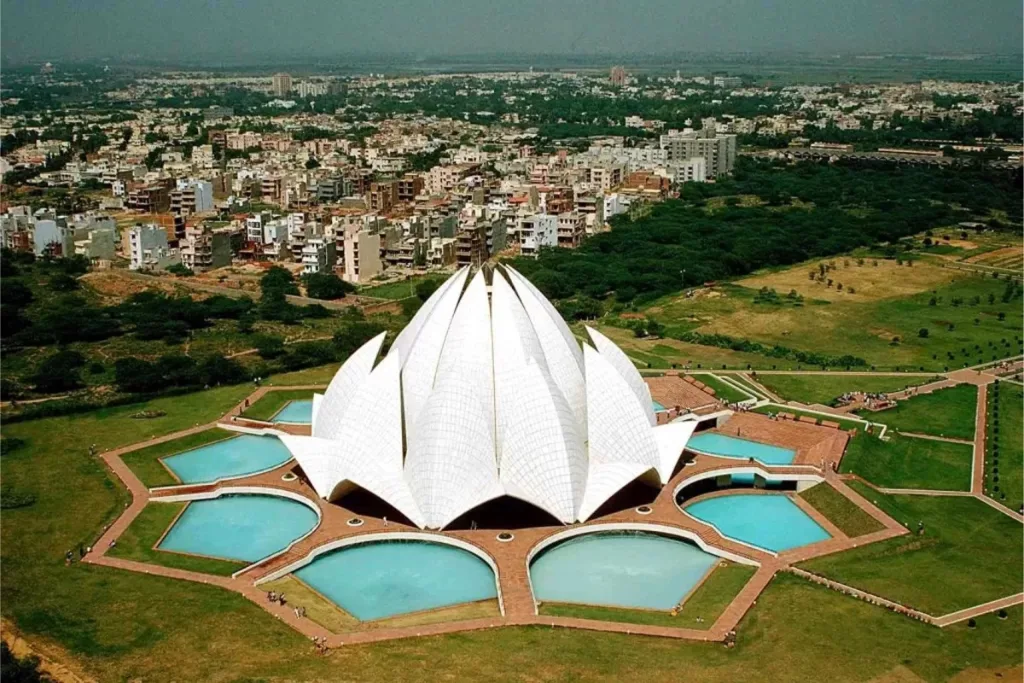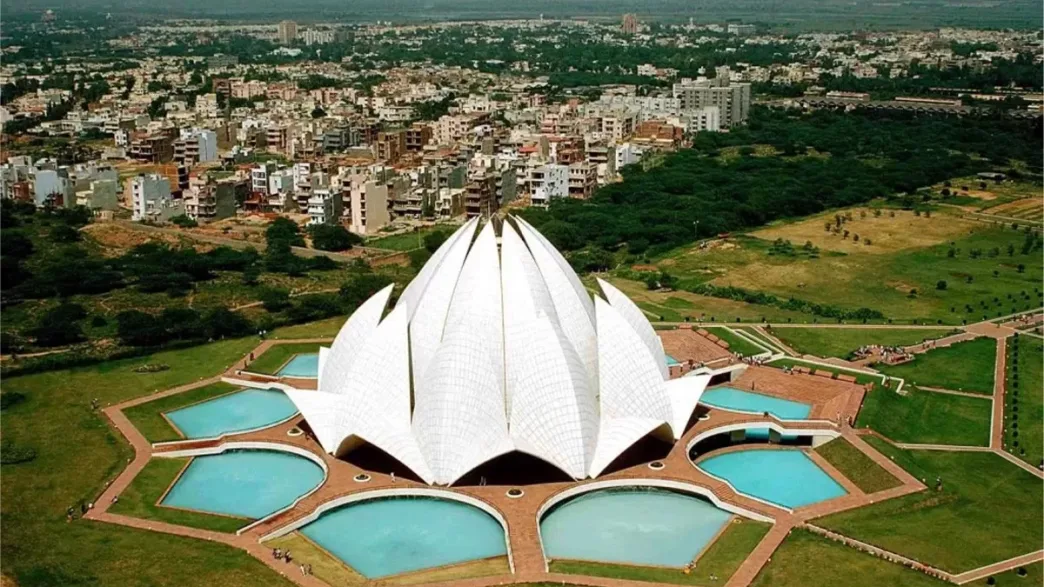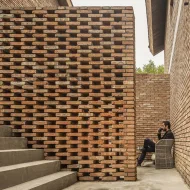Architecture is much more than a physical structure; it is a powerful language that conveys meaning, evokes emotions and shapes our understanding of the world. Symbolism plays a crucial role in this language, giving buildings a deeper meaning and connecting them to our cultural heritage, beliefs and aspirations. This chapter explores the fascinating world of symbolism in architecture, examining its concepts, historical context, key features and global trends.

Defining Symbolism: Concepts and Interpretations
In architecture, symbolism refers to the use of forms, materials and design elements to convey specific meanings and ideas. This is a complex and multifaceted concept, with interpretations varying across cultures and historical periods:
- Universal Symbols: Some symbols have universal meanings across cultures, such as the circle representing unity or the triangle representing stability.
- Cultural Symbols: Other symbols are specific to certain cultures or religions and carry unique meanings and interpretations.
- Personal Symbols: Architects can also incorporate personal symbols that reflect their own beliefs, experiences or artistic visions into their designs.
Historical Context of Symbolism in Architectural Practice
Symbolism has been an integral part of architectural practice throughout history, evolving with cultural beliefs and technological advances:
- Ancient Architecture:Ancient civilisations such as the Egyptians and Greeks made extensive use of symbolism in their architecture, including religious motifs, astronomical alignments and geometric patterns.
- Medieval Architecture: Medieval architecture was heavily influenced by religious symbolism, with churches and cathedrals featuring elaborate iconography, stained glass windows and architectural elements with spiritual meanings.
- Renaissance and Baroque Architecture: The Renaissance and Baroque periods saw a shift towards more secular symbolism, with buildings featuring classical motifs, human figures and allegorical representations.
- Modern Architecture: Modern architecture has generally rejected overt symbolism, emphasising functionality and simplicity. However, even in minimalist designs a subtle symbolism can be found in the choice of materials, forms and spatial arrangements.
Basic Characteristics of Symbolic Architecture: Meaning and Representation
Symbolic architecture is characterised by the use of forms, materials and design elements to convey specific meanings and ideas:
- Form and Shape: The shape and form of a building can carry symbolic meanings. For example, a pyramid may symbolise power and eternity, while a dome may represent heaven or the divine.
- Materials: The choice of material can also be symbolic. For example, marble is often associated with purity and splendour, while wood is associated with warmth and naturalness.
- Decorative Elements:Decorative elements such as sculptures, carvings and stained glass windows can convey specific meanings and stories.
- Spatial Arrangements: The arrangement of spaces within a building can also be symbolic. For example, a central hall may represent a gathering place or a centre of power.
The Relationship between Culture and Symbolism in Design
Symbolism in architecture is deeply intertwined with culture, reflecting the beliefs, values and traditions of a given society:
- Cultural Influences: Architectural styles and symbols are often influenced by the cultural context in which they were created.
- Religious Symbolism: Religious beliefs often play an important role in architectural symbolism; buildings are designed to reflect certain doctrines and rituals.
- Social Symbolism: Architecture can also convey social messages by reflecting the status, power or identity of a particular group or individual.
Global Trends in Symbolic Architectural Design
Symbolism in architecture is a global phenomenon with various trends emerging from different cultures and regions:
- Contemporary Symbolism: Contemporary architects are exploring new ways to incorporate symbolism into their designs, often inspired by local traditions, environmental concerns and technological advances.
- Sustainable Symbolism: Sustainable design principles are increasingly being integrated into symbolic architecture, with buildings designed to minimise environmental impact and encourage a connection with nature.
- Interactive Symbolism: Sym bolic architecture uses interactive technologies to create more engaging and immersive experiences, allowing visitors to interact with the building and its symbolism in new ways.
Symbolism in architecture is a powerful tool that allows us to connect with the past, understand the present and envision the future. By understanding the language of symbols, we can appreciate the deeper meanings embedded in buildings and gain a richer understanding of the human experience.
Types of Symbolism in Architectural Design: A Tapestry of Meaning
Symbolism in architecture is a rich tapestry woven from a variety of threads, each representing a different aspect of human experience. This chapter explores the various types of symbolism used by architects, showing how buildings can become powerful expressions of faith, cultural heritage, environmental awareness and social values.
Religious Symbolism: Structures as an Expression of Belief
Religious symbolism is perhaps the most common form of architectural symbolism, with buildings serving as sacred spaces for worship, pilgrimage and spiritual reflection:
- Churches and Cathedrals: Churches and cathedrals are often designed to evoke a sense of awe and reverence, and include elements such as soaring arches, stained glass windows, and elaborate ornamentation that convey spiritual meanings.
- Mosques: Mosques are characterised by minarets, domes and courtyards that symbolise the call to prayer, the divine presence and the importance of community.
- Temples: Temples in different cultures often contain specific architectural features and symbolism that reflect their own religious beliefs and practices.
National Identity: Architecture as a Reflection of Cultural Heritage
Architecture can serve as a powerful symbol of national identity, reflecting a nation’s cultural heritage, history and aspirations:
- Government Buildings: Government buildings such as parliaments, presidential palaces and courthouses often contain architectural elements that symbolise the power, authority and values of the nation.
- Monuments and memorials: Monuments and memorials commemorate important events, people or historical figures and serve as reminders of a nation’s past and shared identity.
- Traditional Architecture:Traditional architectural styles, such as vernacular architecture, can be seen as expressions of a nation’s cultural heritage and connection to the land.
Environmental Symbolism: Representation of Nature and Sustainability
Environmental symbolism is becoming increasingly important in contemporary architecture as architects strive to create buildings that harmonise with nature and promote sustainability:
- Green Roofs and Walls: Green roofs and walls symbolise a commitment to environmental sustainability, providing habitat for wildlife, reducing stormwater runoff and improving air quality.
- Natural Materials: The use of natural materials such as wood, stone and bamboo symbolises a connection with nature and respect for the environment.
- Biomimicry: Biomimicry, the practice of taking inspiration from nature, is used to create more efficient, flexible and sustainable buildings.
Social Symbolism: Architecture as an Instrument of Social Values
Architecture can also be used as a means of expressing social values and promoting social cohesion:
- Public Spaces: Public spaces such as parks, plazas and community centres can symbolise the importance of social interaction, recreation and civic engagement.
- Affordable Housing: Affordable housing projects can symbolise a commitment to social justice and equity by providing safe and affordable homes for all members of the community.
- Community-Based Design: Community-based design processes, where residents are involved in the design and planning of their neighbourhoods, can symbolise a commitment to participatory democracy and community empowerment.
By understanding the various types of symbolism in architectural design, we can appreciate the deeper meanings embedded in buildings and gain a richer understanding of the human experience. Architecture is not just bricks and mortar; it is a powerful language that appeals to our values, beliefs and aspirations.
The Effect of Symbolism on Architectural Aesthetics
Symbolism in architecture is not just about hidden meanings; it profoundly affects the aesthetic appeal of buildings, shaping how we perceive and experience them. This chapter explores how symbolism interacts with architectural aesthetics, revealing how form, materials, spatial organisation and ornament contribute to the overall effect of a building.
Form and Function: Balancing Aesthetic Appeal and Symbolic Meaning
The form of a building is often the first thing we notice and can carry an important symbolic weight. Architects try to balance aesthetic appeal with symbolic meaning:
- Geometric Forms: Simple geometric forms such as circles, squares and triangles often carry universal symbolic meanings. A circular building can symbolise unity and integrity, while a square building can represent stability and order.
- Organic Forms:Organic forms inspired by nature can evoke feelings of harmony, growth and connection to the natural world.
- Symbolic Proportions: The proportions of a building can also be symbolic. For example, the Golden Ratio, found in nature and ancient architecture, is often associated with harmony and beauty.
Materials and Colours: Communicating Symbolic Messages through Design Choices
The materials and colours used in a building can also convey symbolic messages:
- Natural Materials: Natural materials such as stone, wood and brick often symbolise durability, permanence and a connection to the earth.
- Man-Made Materials: Man-made materials such as steel, glass and concrete can symbolise modernity, progress and technological development.
- Colour Symbolism: Colours have strong symbolic connotations across cultures. White often represents purity and innocence, while red can symbolise passion or danger.
Spatial Organisation: Creating Meaningful Experiences through Order
The way spaces are organised in a building can create a strong sense of symbolism:
- Central Hall: A central hall, often found in churches and government buildings, can symbolise a gathering place, a centre of power or a connection to the divine.
- Hierarchical Spaces: The organisation of spaces can reflect a hierarchy of importance. For example, a large entrance hall can lead to a more intimate and private space.
- Flow and Circulation: The way people move through a building can be designed to create a specific experience. A winding path can symbolise a journey of discovery, while a direct route can represent efficiency and clarity.
Ornament: Enhancing Symbolism through Decorative Elements
Ornament plays a crucial role in reinforcing the symbolic meaning of a building:
- Sculptures and Reliefs: Sculptures and reliefs can add depth and meaning to a building’s façade by depicting stories, figures or abstract concepts.
- Stained Glass Windows: Often found in churches, stained glass windows can tell stories, depict religious figures or create a sense of awe and wonder.
- Motifs and Patterns: Repetitive motifs and patterns can symbolise cultural traditions, religious beliefs or abstract concepts.
By understanding the interplay between symbolism and architectural aesthetics, we can appreciate the richness and complexity of buildings as expressions of human thought, belief and desire. The beauty of a building is not just its outward appearance; it is often based on the deeper meanings and symbolism that lie beneath the surface.
The Role of Cultural Context in Symbolic Architecture: A Global Weave of Meaning
Symbolism in architecture is not a universal language; it is a complex tapestry woven from the threads of different cultures and traditions. This chapter explores the important role of cultural context in shaping symbolic architecture, examining how local traditions, globalisation, community engagement and interpretive challenges contribute to the richness and complexity of this field.
Local Traditions: The Impact of Cultural Heritage on Design
Local traditions play a fundamental role in shaping symbolic architecture, influencing the choice of materials, forms and decorative elements:
- Vernacular Architecture: Rooted in local traditions and materials, vernacular architecture often reflects the climate, landscape and cultural practices of a region.
- Religious Symbolism: Religious beliefs and practices often influence the design of sacred spaces, incorporating specific architectural features and symbolism that carry deep meaning for the community.
- Cultural Motifs: Cultural motifs such as geometric patterns, animal figures or floral patterns are often incorporated into architectural ornamentation and reflect the artistic traditions and beliefs of a particular culture.
Globalisation: Changes in Symbolic Architectural Ideas
Globalisation has led to the exchange of symbolic architectural ideas across cultures, resulting in a hybrid and evolving design landscape:
- Cross-Cultural Influences: Architects are increasingly inspired by diverse cultural traditions, incorporating elements from different regions and styles into their designs.
- Modern Interpretations: Traditional architectural elements and symbols are often reinterpreted in modern contexts, creating new and innovative expressions of cultural identity.
- Global Trends:Global trends in architecture, such as sustainability and technological advances, influence the way symbolism is expressed in buildings around the world.
Community Engagement: Involving Local People in Symbolic Design
Involving local people in the design process can help to ensure that symbolic architecture resonates with the community and reflects its values and aspirations:
- Participatory Design: Participatory design processes allow community members to bring their ideas, knowledge and cultural perspectives to the design of buildings.
- Cultural Sensitivity: Engaging with local communities helps architects understand the cultural significance of certain symbols and ensure that their designs are culturally sensitive and respectful.
- Community Ownership: When communities are involved in the design process, they feel a sense of ownership and pride in the resulting buildings.
Interpretation Challenges: Understanding Different Symbolic Meanings
Interpreting symbolic architecture can be difficult because meanings can vary across cultures, historical periods and individual perspectives:
- Cultural Differences: Symbols may carry different meanings in different cultures, leading to potential misunderstandings or misinterpretations.
- Historical Context: The meaning of a symbol may change over time, reflecting shifts in cultural values and beliefs.
- Personal Interpretation: Individuals may interpret symbols differently according to their own experiences, beliefs and cultural background.
Understanding the cultural context of symbolic architecture is essential to appreciate its richness and complexity. By engaging with local traditions, embracing globalisation, encouraging community engagement and overcoming interpretive challenges, we can unlock deeper meanings embedded in buildings and gain a richer understanding of the human experience.
Psychological Effects of Symbolism in Architecture: Beyond Physical Form
Architecture is not just a physical structure; it is a powerful tool that shapes our emotions, influences our sense of identity and evokes memories. Symbolism plays an important role in this psychological impact by attributing deeper meanings to buildings and creating a profound connection between our inner world and the built environment. This chapter explores the psychological effects of symbolism in architecture, examining how it affects our emotional responses, sense of belonging, memories and collective experiences.
Emotional Reactions: How Symbolic Design Affects Perception
Symbolic architecture can evoke a wide range of emotions, influencing how we perceive and experience a space:
- Awe and Respect: Buildings designed with soaring arches, large domes or intricate ornamentation can inspire feelings of awe and respect, often associated with religious spaces or monumental structures.
- Comfort and Security: Warm, inviting spaces with natural materials and soft lighting can evoke feelings of comfort and security, creating a sense of refuge or home.
- Excitement and Stimulation: Dynamic spaces with bold colours, unexpected angles or interactive elements can stimulate our senses and evoke feelings of excitement and energy.
Identity and Belonging: The Role of Architecture in Community Connectivity
Symbolic architecture can contribute to a sense of identity and belonging, fostering a bond between individuals and their communities:
- Shared History and Culture: Buildings that reflect local traditions, historical events or cultural values can strengthen community ties by creating a shared sense of history and identity.
- Community Gathering Spaces: Public spaces such as plazas, parks or community centres designed with symbolic elements can encourage social interaction and create a sense of belonging.
- Architectural Icons: Iconic buildings that symbolise a city or region can become points of pride and identity, fostering a sense of collective identity.
Symbolism and Memory: Architectural Reminders of Historical Events
Symbolic architecture can serve as powerful reminders of historical events, shaping our understanding of the past and influencing our present:
- Monuments and Memorials: Monuments and memorials designed to commemorate significant events or people can evoke strong emotions and serve as reminders of the past.
- Historic Buildings: The preservation of historic buildings can help maintain a connection to the past by providing a tangible link to our cultural heritage.
- Architectural Narratives: Buildings can tell stories through their design, including symbolic elements that reflect historical events, cultural traditions, or personal experiences.
Public Spaces: Design for Collective Experience and Reflection
Symbolic architecture can play an important role in shaping public spaces, creating opportunities for collective experience and reflection:
- Symbolic Landscapes: Public spaces can be designed with symbolic elements that evoke certain emotions or encourage contemplation, such as fountains, gardens or monuments.
- Interactive Installations: Interactive installations and public art can engage visitors on a deeper level and encourage them to reflect on the meaning of the space and their place within it.
- Community Gathering Spaces: Public spaces designed to encourage social interaction and community engagement can create a shared experience and sense of belonging.
Case Studies: Psychological Effects of Symbolic Structures
Numerous case studies illustrate the psychological impact of symbolic architecture:
- Taj Mahal: A monument to love and loss, the Taj Mahal evokes feelings of awe, respect and deep sadness.
- Eiffel Tower: A symbol of Paris and technological innovation, the Eiffel Tower inspires feelings of excitement, wonder and adventure.
- Great Wall of China: A symbol of national pride and resilience, the Great Wall of China evokes a sense of awe, respect and history.
By understanding the psychological impact of symbolism in architecture, we can design buildings that not only fulfil functional needs but also enrich our emotional experiences, foster a sense of belonging and create lasting memories. Architecture is a powerful tool for shaping our perceptions, influencing our emotions and connecting us to the world around us.
The Future of Symbolism in Architectural Design: A Dynamic and Evolving Landscape
Symbolism in architecture is not a static concept; it is a dynamic and evolving field that reflects the changing values, beliefs and aspirations of society. This chapter explores the future of symbolism in architectural design, examining emerging trends, technological innovations, global perspectives and the importance of inclusivity in shaping a more meaningful and effective built environment.
Emerging Trends: The Evolution of Symbolic Representation in Modern Architecture
Modern architecture is witnessing a resurgence of interest in symbolism as architects discover new ways to add meaning and depth to their designs:
- Sustainable Symbolism: Sustainable design principles are increasingly being integrated into symbolic architecture, with buildings designed to minimise environmental impact and encourage a connection with nature.
- Interactive Symbolism: Interactive technologies are being used to create more engaging and immersive experiences in symbolic architecture, allowing visitors to interact with the building and its symbolism in new ways.
- Hybrid Symbolism: Architects blend traditional and contemporary symbolic elements to create hybrid designs that reflect the complexity of modern society.
Technological Innovations: Developing Symbolism through Digital Design
Technological advances are transforming the way architects design and express symbolism:
- Digital Modelling and Simulation: Digital tools allow architects to experiment with complex forms, materials and lighting effects, creating more nuanced and expressive symbolic designs.
- Virtual Reality and Augmented Reality: VR and AR technologies provide immersive experiences that allow architects to explore the symbolic potential of their designs in a virtual environment.
- Data-Driven Design: Data analysis and visualisation tools help architects understand the social, cultural and environmental context of their projects, informing design decisions and increasing the symbolic impact of their work.
Global Perspectives: A Comparative Analysis of Symbolic Architecture Worldwide
The future of symbolism in architecture will be shaped by the global exchange of ideas and perspectives:
- Cross-Cultural Collaboration: Architects are increasingly collaborating with designers and artists from different cultures, leading to a richer and more diverse understanding of symbolism.
- Comparative Analysis: Studying and comparing symbolic architecture from different cultures and historical periods can provide valuable insights into the evolution and enduring power of symbolism.
- Global Trends:Global trends in architecture, such as urbanisation, climate change and technological advances, influence the way symbolism is expressed in buildings around the world.
Design for Inclusion: Enabling Diverse Symbolic Representations
The future of symbolic architecture should embrace inclusivity and ensure that diverse perspectives and experiences are represented:
- Community Involvement: Involving local communities in the design process can help to ensure that symbolic architecture resonates with society and reflects the values and aspirations of the community.
- Cultural Sensitivity: Architects should be sensitive to the cultural significance of symbols and ensure that their designs respect different beliefs and traditions.
- Representation and Equity: Symbolic architecture should reflect the diversity of human experience and ensure that all voices and perspectives are represented.
Conclusion: The Lasting Importance of Symbolism in Architectural Design
Symbolism in architecture is not a fad; it is an enduring aspect of human expression and will continue to shape the built environment for generations to come. By embracing new trends, harnessing technological innovation, promoting global perspectives and prioritising inclusivity, architects can create buildings that are not only functional but also meaningful, inspiring and deeply connected to the human experience.





















